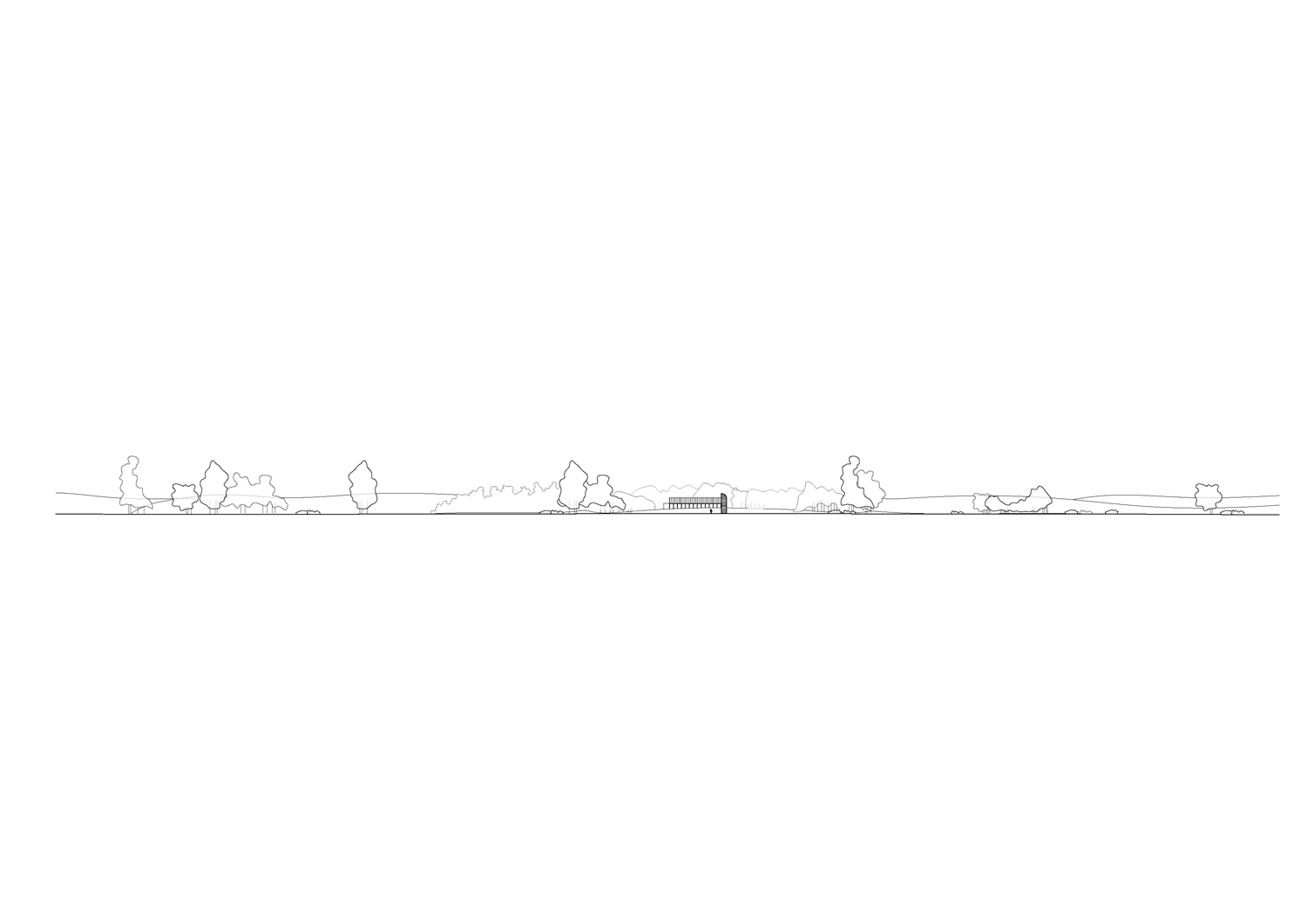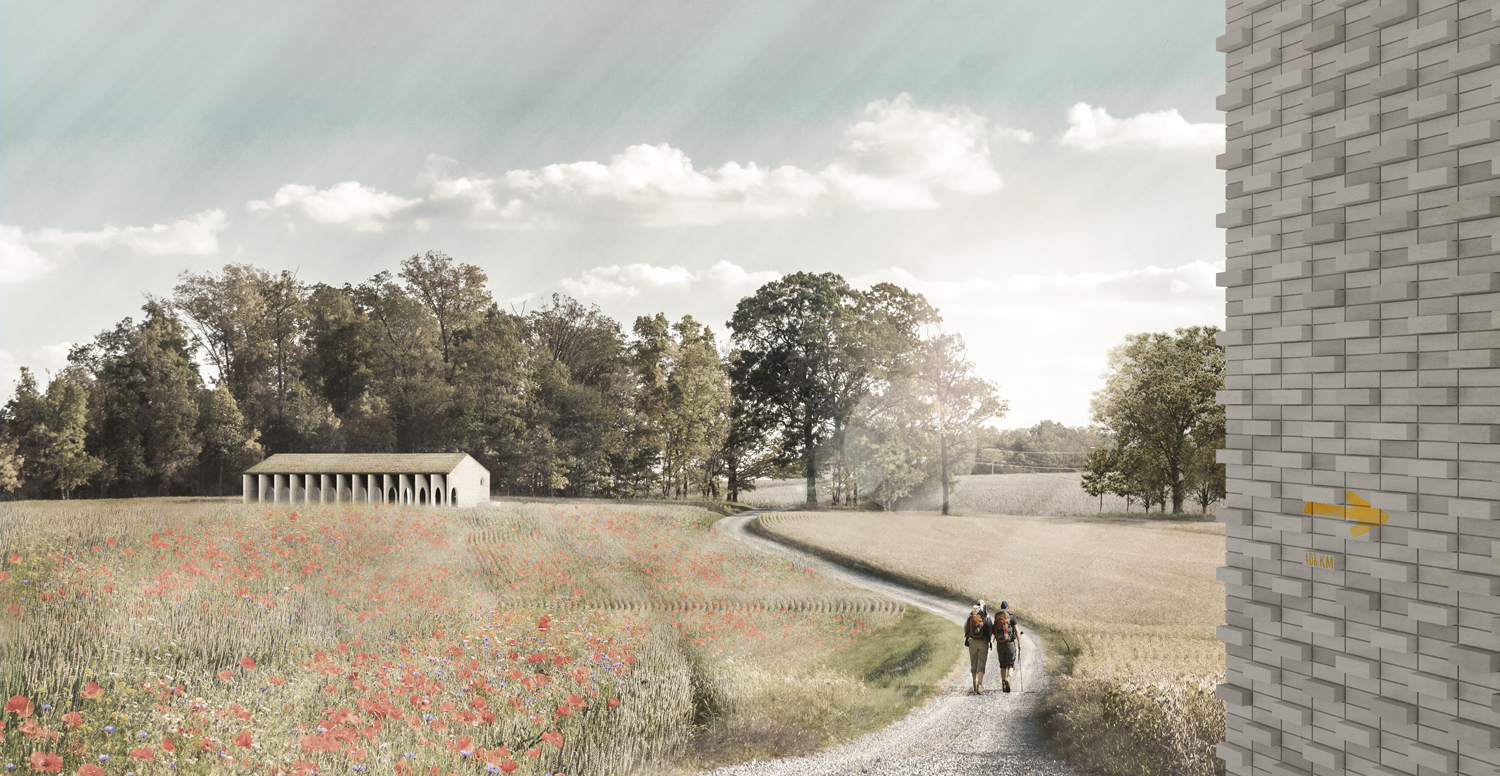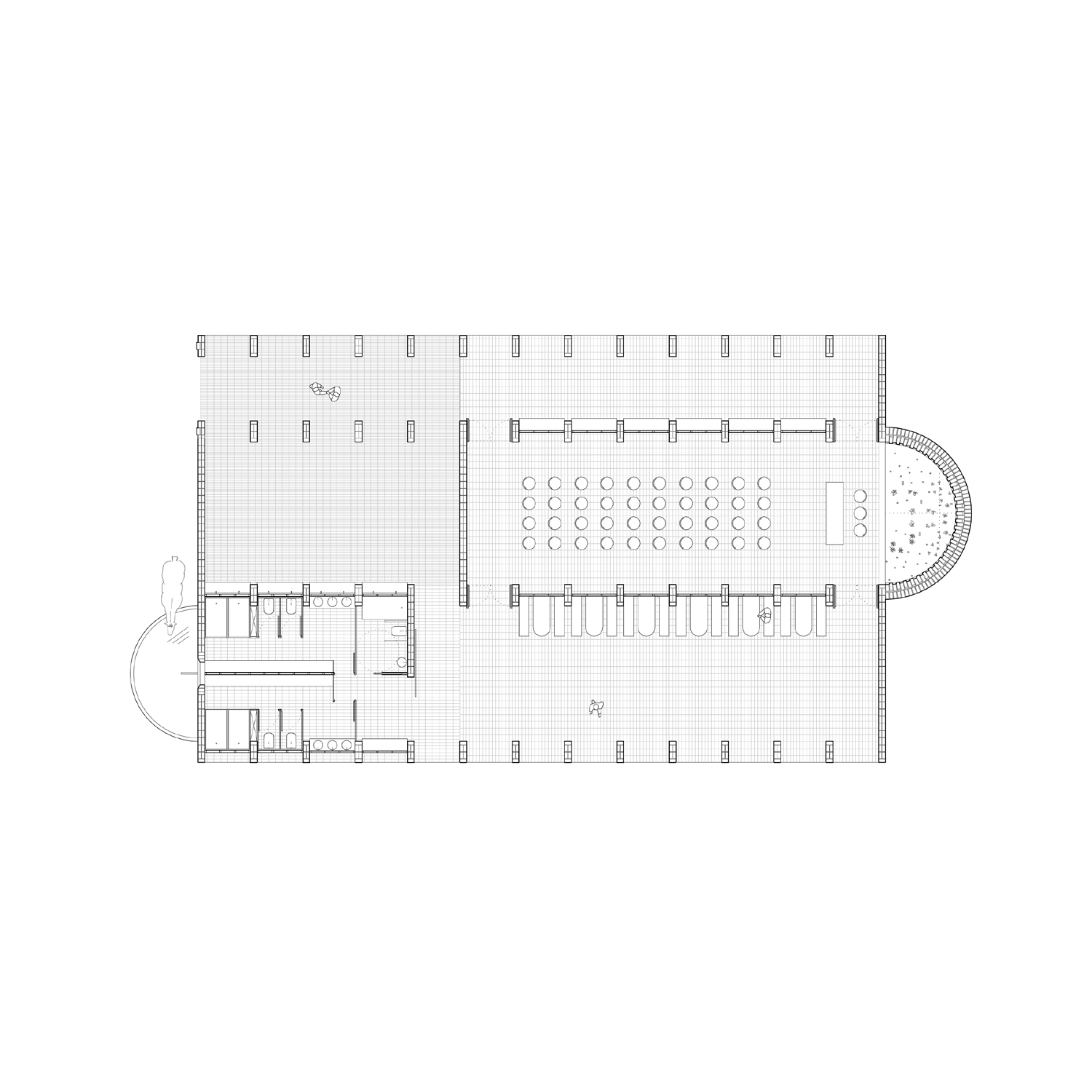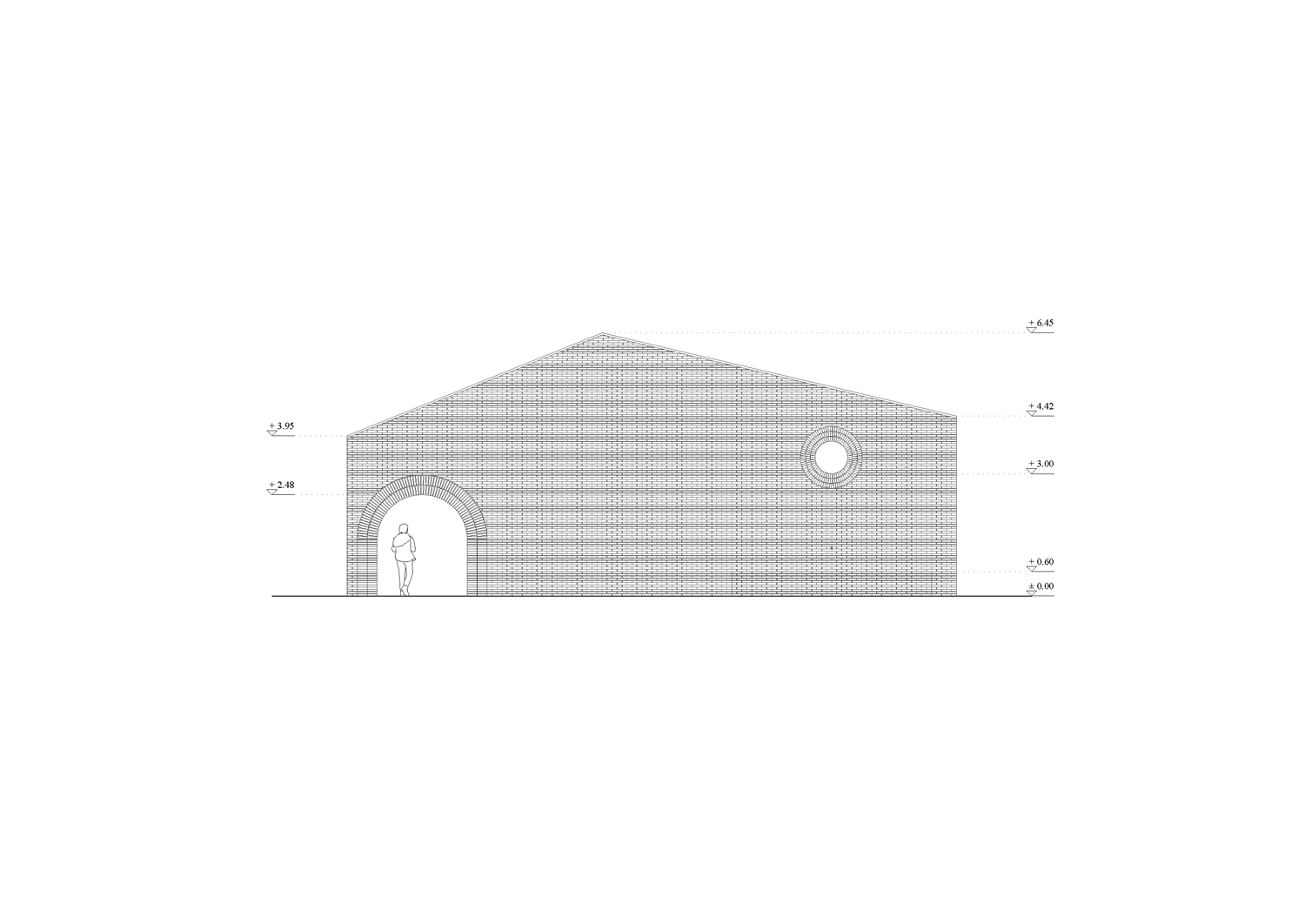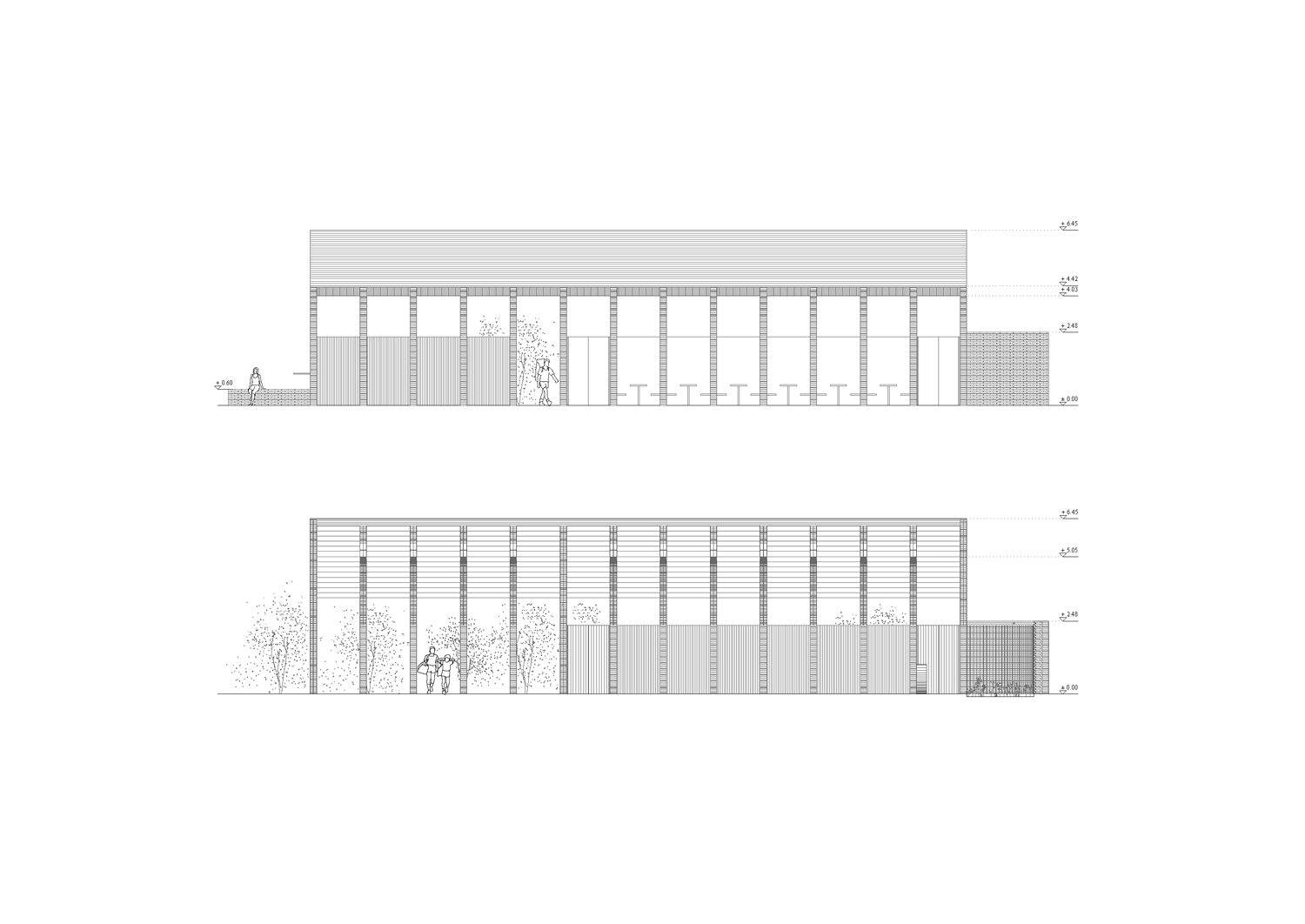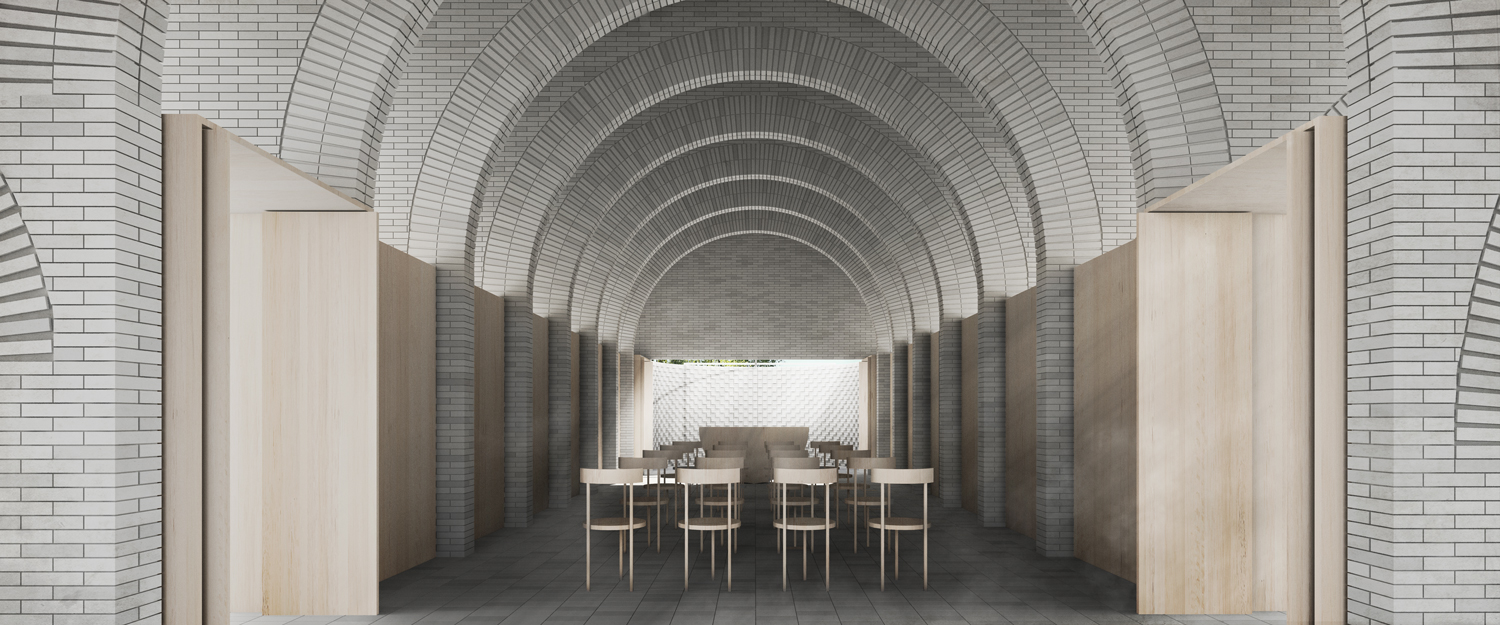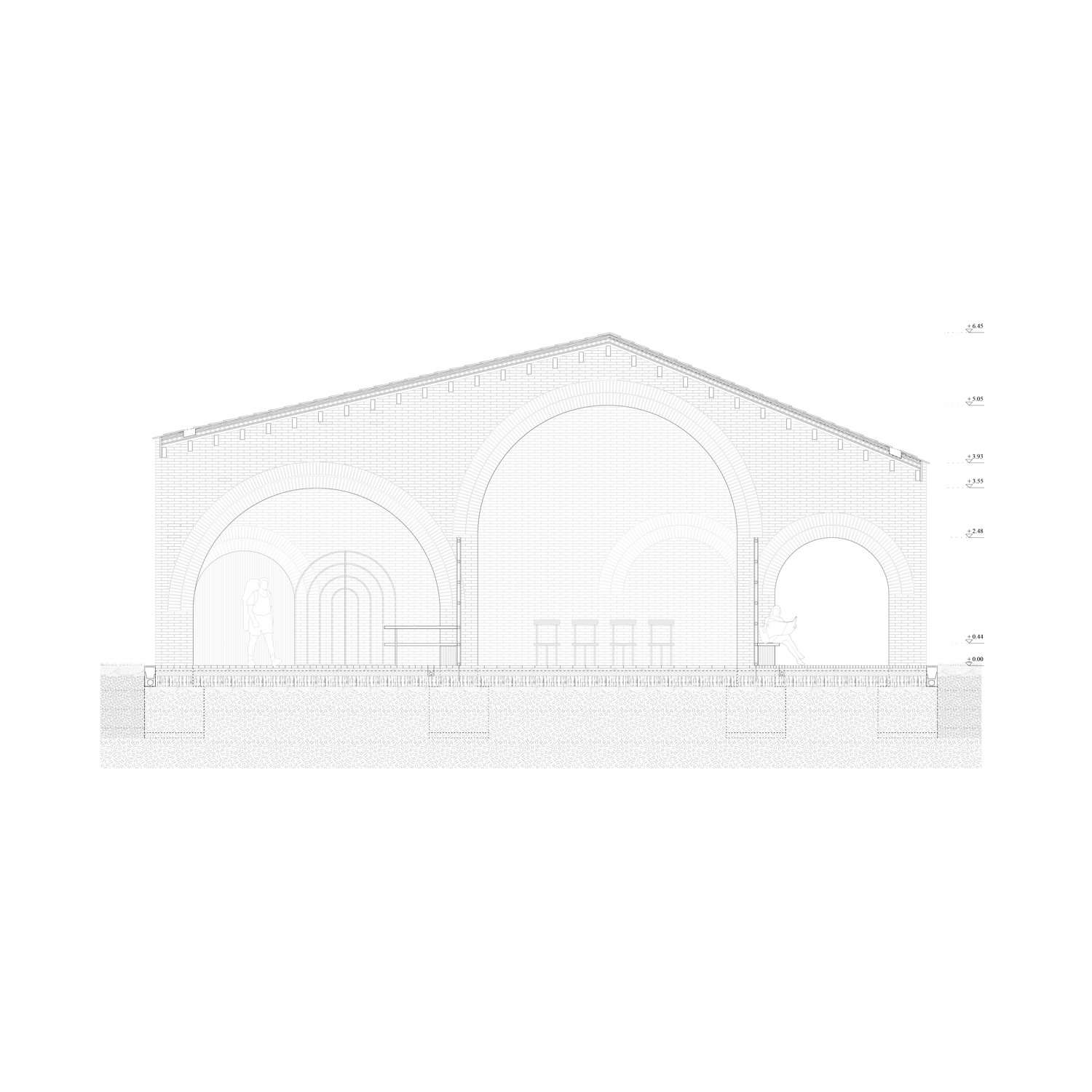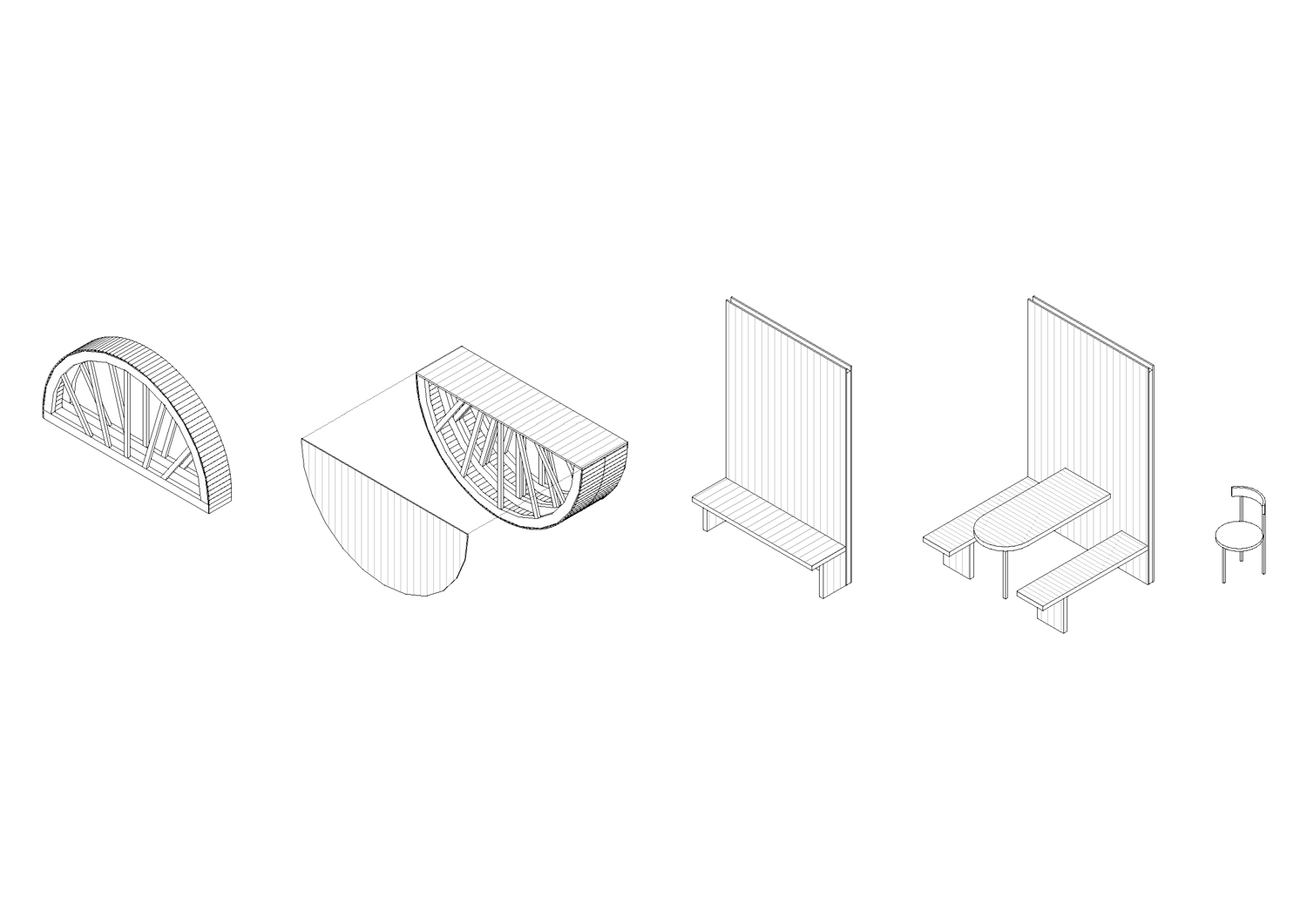2893-EFM-ES-2017
Client: Aula Cerámica Hispalyt
Status: Competition (2017)
Clasification: 1 prize
Location: Melgar de Fernamental, Spain
Climate: Continental, Temperate
Material: Brick
Environment: Countryside
Visualizer: Studio
Scale: 370 ㎡ Small
Types: Chapel, Religious
As Josep Quetglas wrote in his Breviary of Ronchamp, “architecture begins with the constitution of the place, as it is, as it was, but above all as it can and should become, as a memory of the place, but also as the will of complete”. Thus, the project for the Chapel in Carrecalzada begins to materialize from the route of the Camino de Santiago. The pilgrim approaches the place accompanied by the characteristic landscape of Palencia: rural buildings located in the middle of sown fields, where strategically placed trees mark vertical points of attention in the middle of the vast horizon. From the stone bridge that crosses the Valdelauta stream, the walker can already see the landmark that indicates the place to intervene. It is an expensive brick construction materialized in a curved wall which, on its concave side, contains the bell tower of the Chapel. From this landmark to the Cathedral of Santiago de Compostela the pilgrim has 408 kilometers of road ahead.
Faced with a site that is 32 and a half times larger than its surface, the Chapel is placed near the southern crown of trees, near the canal and away from the bell tower that has guided the walker there. All the remaining land is designed as a large landscaped space. The implantation strategy consists of creating a ritual path to the long encounter with the temple that is placed just behind the small promontory. In this way the visitor moves along a garden that is projected following the design of the nearby sown fields; the Chapel drinks from its surroundings. The vegetation used is from the same family of plants found in the territory and responds more to a natural landscape with its own biological order than to a garden in the classical sense of the word. In the middle of it, a zigzagging path makes its way that at times moves the Chapel into the background. This avoids obstacles, such as the planted plants, the slopes of the site and even the pool of water next to the temple, to experience with more intensity the discovery of the building dedicated to prayer and meditation.
The new Chapel, which has a proportionality between its sides equal to the golden ratio, is designed to be made entirely of exposed brick, from the supporting structure to the interior and exterior floors. A succession of supporting arches denotes the simplicity of the construction scheme, chosen not only for the possibility of covering large spans, but also for the construction tradition of the place. The cross section shows the asymmetry in the radius of the three arches that shape the building, each one corresponding to the type of space that it must qualify. Thus, the arch of smaller radius gives rise to the north ambulatory, at the same time that it marks the entrance to the chapel through the west façade. The middle radius arch contains the southern ambulatory, a semi-covered space dedicated to leisure and relaxation for the visitor. It is also this radius that delimits the space of the toilets, to the west. The arch with the largest radius houses the entrance hall, a place where pilgrims are received and, as tradition dictates, their Compostela is sealed. At the opposite end are the same arches that close the space of the Chapel itself. She constitutes the most intimate and secluded place of the whole. In its extreme east a small circular patio is attached that contains the cross. This is placed parallel to the ground and is supported by the concave enclosure wall. It is natural light that will finally make the Christian symbol evident.
The construction of the Chapel is possible thanks to three wooden falsework of different radii. The opportunity to design the furniture is accompanied by the desire to reuse said wood. Thus, certain objects such as the benches, the tables in the southern ambulatory and the altar are conceived from the falsework that have already served their constructive purpose. Likewise, one of the falseworks is used as a mold for the trough for animals that is close to the west entrance. The design of a chair with three supports, also made of wood, completes the furniture catalog proposed for the chapel. Finally, the details that are subtly introduced into the project are executed with a single 12 x 24 x 5cm Hispalyt ceramic module. They can be seen both on the west façade and in the inner courtyard of the Chapel, behind the altar. By sectioning said module, the combinatorial possibilities are expanded depending on the effect to be achieved. In this way, the walls of the enclosure add an unexpected tactile and visual component without the need to resort to another new material.

